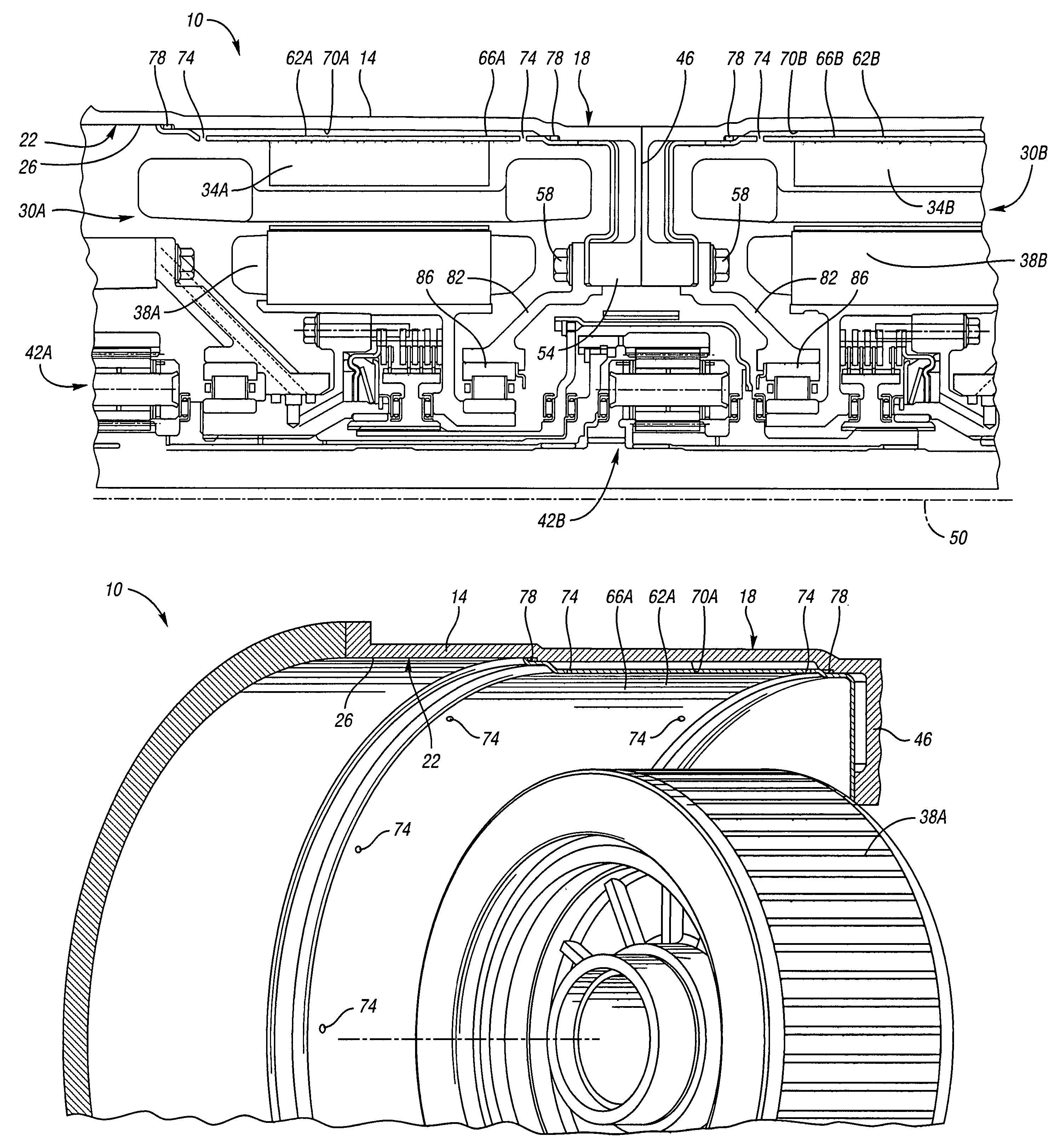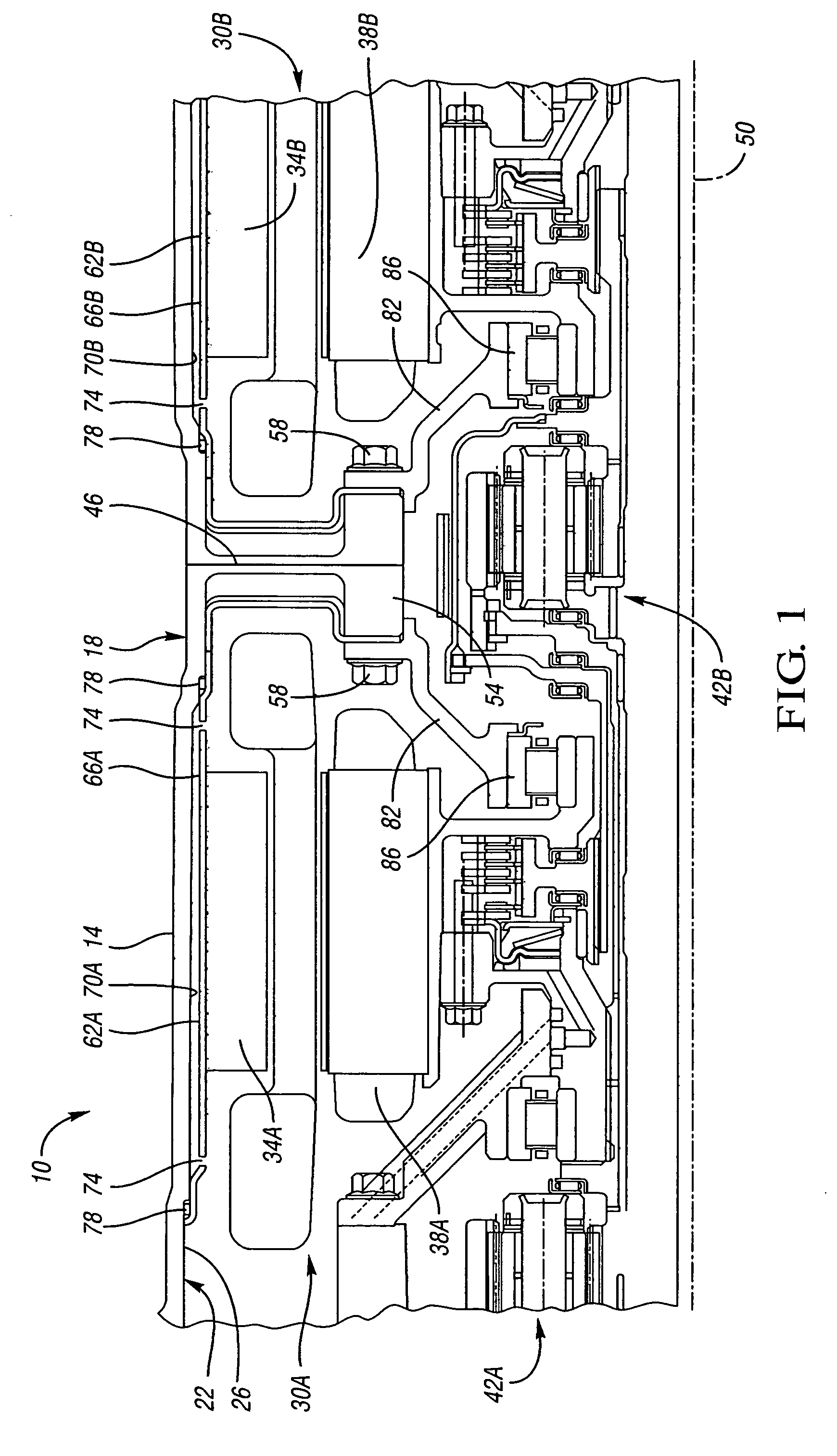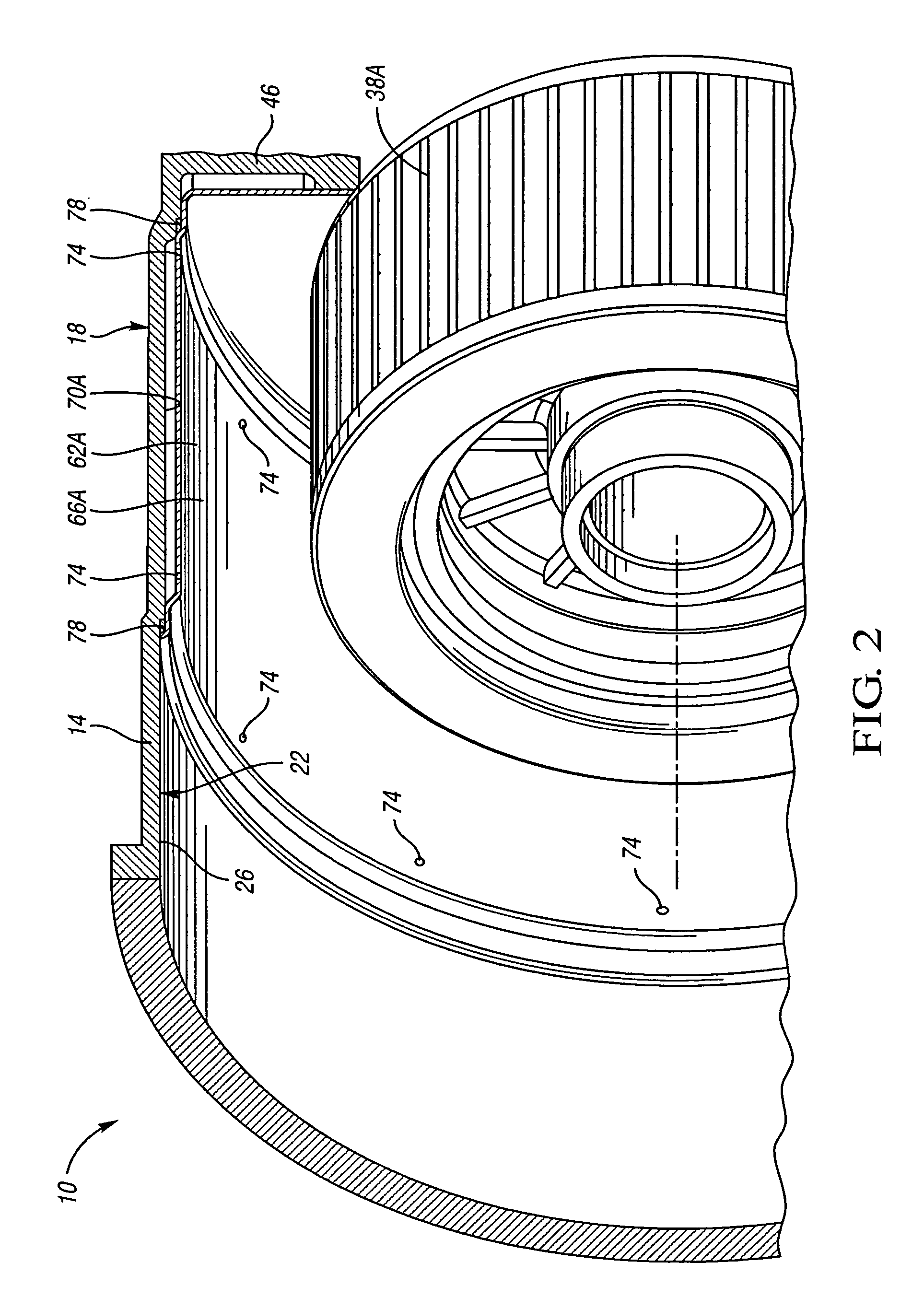Electrically variable transmission
a transmission and electric variable technology, applied in the field of transmissions, can solve the problems of limiting the manufacturing process that may be employed, and achieve the effect of superior cooling of the stator windings
- Summary
- Abstract
- Description
- Claims
- Application Information
AI Technical Summary
Benefits of technology
Problems solved by technology
Method used
Image
Examples
Embodiment Construction
[0014]Referring to FIG. 1, a portion of an electrically variable transmission 10 is schematically depicted. Exemplary electrically variable transmissions are described in U.S. Pat. No. 5,558,595, issued Sep. 24, 1996 to Schmidt et al; U.S. Pat. No. 5,931,757, issued Aug. 3, 1999 to Schmidt; U.S. Pat. No. 6,478,705, issued Nov. 12, 2002 to Holmes et al; and U.S. Pat. No. 6,527,658, issued Mar. 4, 2003 to Holmes et al, each of which is hereby incorporated by reference in its entirety. The transmission 10 includes a housing 14 that defines the exterior surface 18 of the transmission. The housing 14 includes an inner surface 22 that defines a generally cylindrical cavity 26.
[0015]The transmission 10 also includes a first electric motor / generator 30A and a second electric motor / generator 30B. Each electric motor generator 30A, 30B includes a generally ring-shaped stator 34A, 34B fixed with respect to the housing 14, and a rotor 38A, 38B. The motors 30A, 30B are coaxially aligned with an ...
PUM
 Login to View More
Login to View More Abstract
Description
Claims
Application Information
 Login to View More
Login to View More - R&D
- Intellectual Property
- Life Sciences
- Materials
- Tech Scout
- Unparalleled Data Quality
- Higher Quality Content
- 60% Fewer Hallucinations
Browse by: Latest US Patents, China's latest patents, Technical Efficacy Thesaurus, Application Domain, Technology Topic, Popular Technical Reports.
© 2025 PatSnap. All rights reserved.Legal|Privacy policy|Modern Slavery Act Transparency Statement|Sitemap|About US| Contact US: help@patsnap.com



